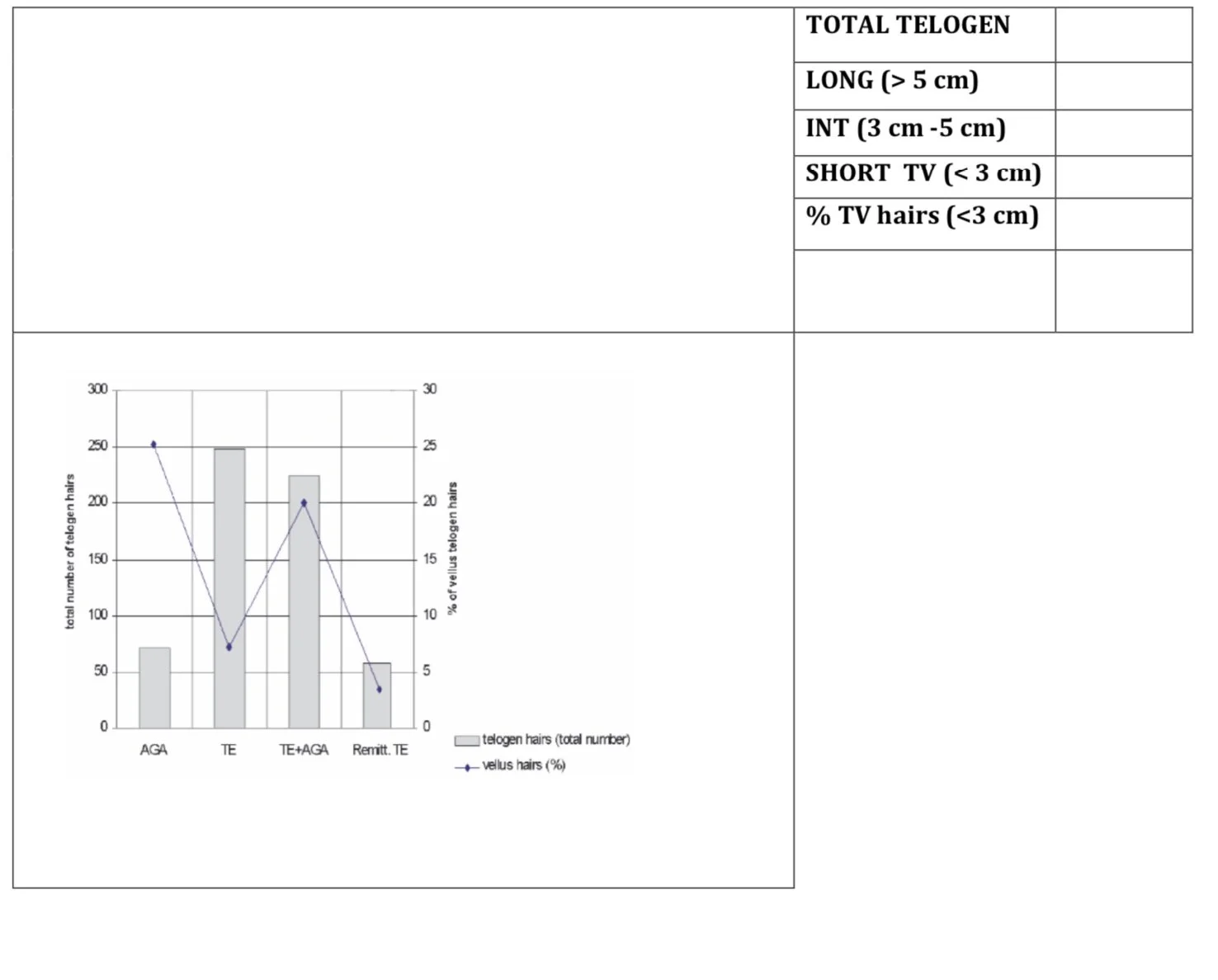The Five Day Modified Hair Wash Test (MWHT)
THE 5 DAY MODIFIED HAIR WASH TEST
The modified hair wash test (MHWT) is an extremely helpful non-invasive test. It is underutilized (or even rarely utilized) by dermatologists mainly because of lack of familiarity, lack of exposure along with the time it takes to interpret the test. It is an extremely powerful technique to differentiate challenging cases of CTE from AGA. The MHWT involves 3 parts: 1) Collecting the Hairs 2) Analyzing the Hairs 3) Interpreting the Results
The patient may perform the first part of the test at home.
Step 1: Collecting the Hairs
The steps in the MHWT are shown in the diagram below. To perform the MHWT, a patient is instructed to avoid shampooing the hair for 5 days before the date of set test date. On the day of the test, the sink is covered with a gauze. The hair is then shampooed thoroughly and rinsed and rinsed and rinsed again. The hairs trapped in the gauze are collected, dried for 3-4 days and then mailed to the office in the same gauze they were trapped on without moving them off the gauze.
Step 2: Analyzing the Hairs
Step 2 begins when the sample arrives back at the office. Most patients simply mail the gauze and hair back to the office in an envelope. The hairs are then divided according to length into hairs less than 3 cm, hairs 3-5 cm and hairs more than 5 cm. We use the following form to count hairs.
FORM FOR ANALYZING RESULTS OF THE MODIFIED HAIR WASH TEST (MHWT)
Step 3: Interpreting the Results
The number of hairs collected in the MHWT can give a good sense of excessive shedding. Results need to be interpreted by a dermatologist who is familiar with the performance and interpretation of this test.
a) Patients with 10% or more of hairs 3 cm or shorter and who shed fewer than 100 hairs are diagnosed as having androgenetic alopecia (AGA).
b) Patients with fewer than 10% of hairs that were 3 cm or shorter and who shed at least 100 hairs are diagnosed as having chronic telogen effluvium (CTE).
c) Patients with 10% or more of hairs that were 3 cm or shorter and who shed at least 100 hairs are diagnosed as having AGA + CTE
d) Finally patients with fewer than 10% of hairs that were 3 cm or shorter and who shed fewer than 100 hairs are diagnosed as having CTE ‘in remission.’
This article was written by Dr. Jeff Donovan, a Canadian and US board certified dermatologist specializing exclusively in hair loss.


